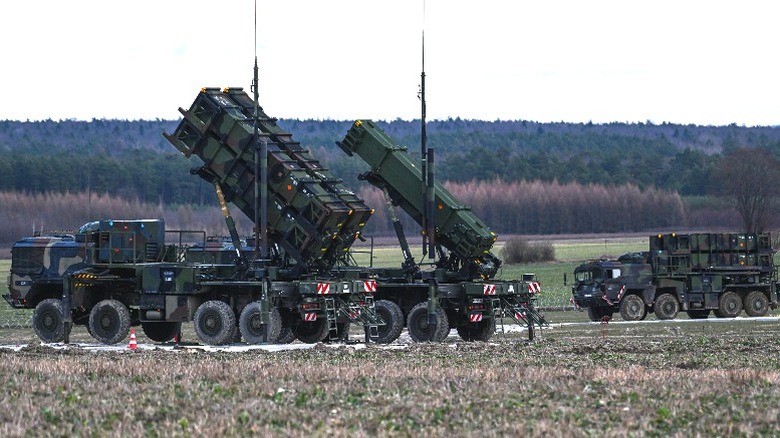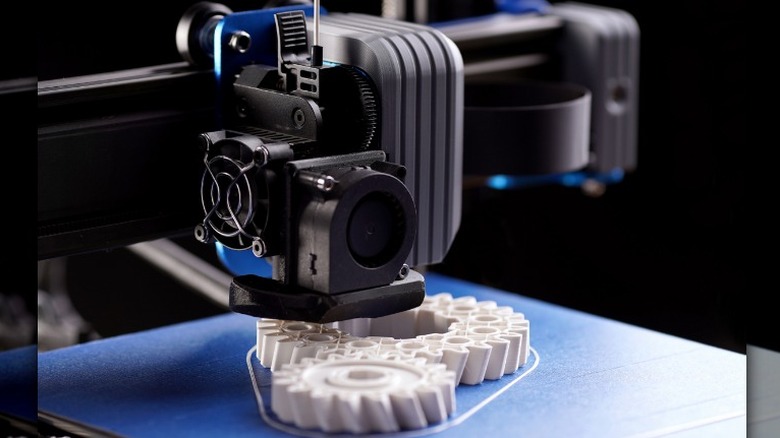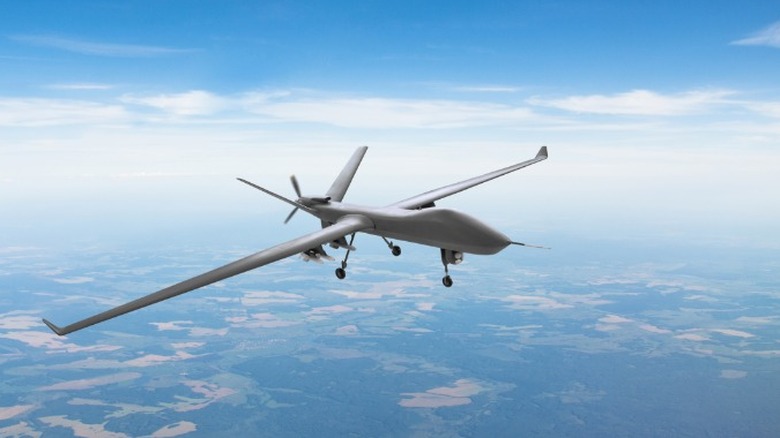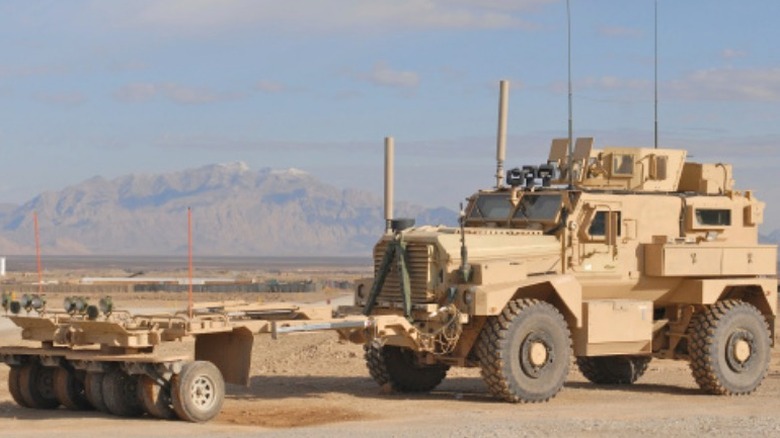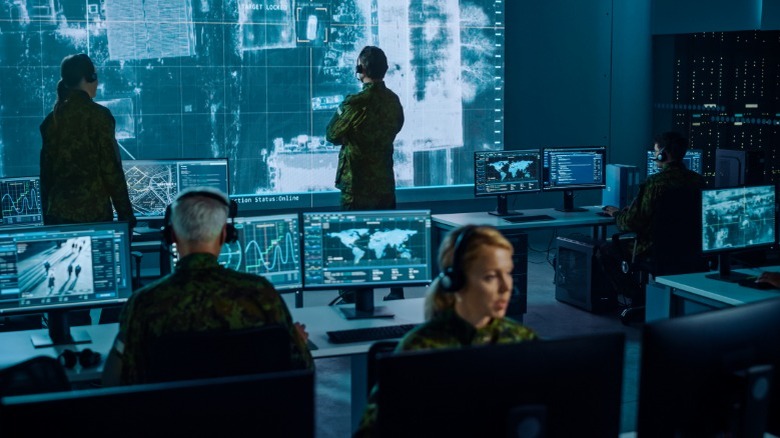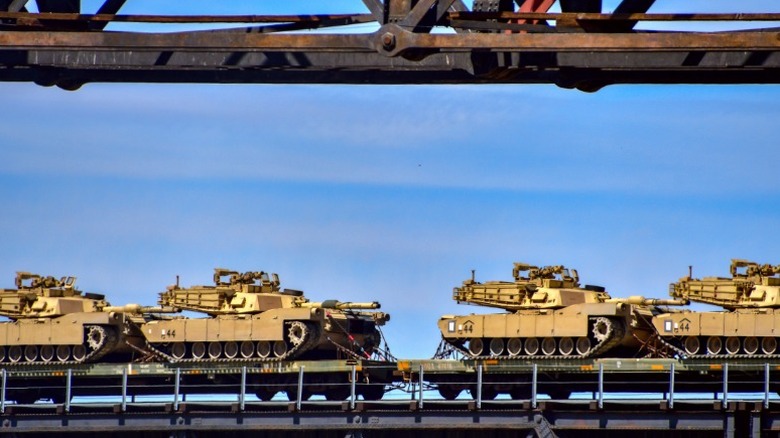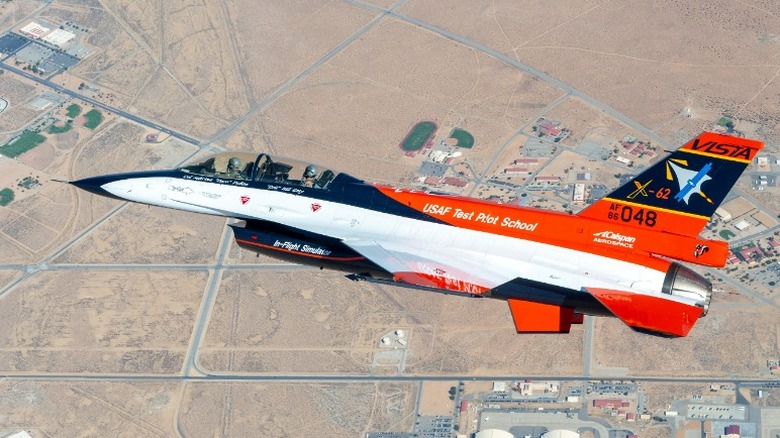10 Ways Technology Is Transforming The US Military
The need for militaries to be equipped with the best technology to gain an advantage over opposing forces has spurred the development of cutting-edge technology for as long as there have been wars. From early advancements in metallurgy to create a superior sword to the advent of gunpowder for guns and cannons, military tech has always been at the forefront of human invention. This has altered the nature of warfare dramatically over time and created vast fighting forces with a high degree of specialization and impressive combined capabilities.
Military tech changed significantly over the centuries following the medieval period and the industrial revolution created even bigger and more powerful arms and equipment that greatly expanded the effectiveness of fighting forces. However, the 20th century sped this development up exponentially and the advancements in tech resulting from WWI and WWII helped to create the modern world as we know it. Modern militaries are outfitted with a plethora of complex and complicated hardware and software that are often unmatched by anything in the civilian world, and the 21st century is posed to transform militaries and warfare at an even faster pace than the previous century. Given the breadth of capabilities covered by modern militaries of the world, it would be impossible to cover everything. Therefore, with a focus on the United States Armed Forces only, here are 10 ways this technology is transforming the military.
Precision guided munitions
Laser-guided munitions were originally developed and produced during the Vietnam War era but it was in the first Gulf War that the public saw the extraordinary power and precision with which they could be used. It became immediately clear that these advanced weapons offered a huge advantage over traditional unguided bombs in eliminating targets efficiently and accurately. Since then, guided technologies have been adapted to a wide variety of weapons large and small.
Some recent weapons that have been seen in use include the Javelin, a shoulder-fired medium-range missile for defense against tanks and armored vehicles, and HIMARS, a wheeled multiple rocket launcher with a range of up to 70 km and targeting accuracy within 200 meters. These weapons and others like them are giving troops the ability to eliminate targets using much less ammunition, which offers many benefits. Using fewer munitions obviously reduces expenses but also prevents collateral damage and curtails the wholesale destruction of civilian buildings and infrastructure not being used by combatants. The Army is currently putting resources into improved long-range precision-guided weapons that will further improve the ability to strike at targets while keeping personnel well out of harm's way, as fighting from further and further away appears to be the future of armed conflict.
The role of social media
Websites such as Facebook and Twitter have long been novel communications tools for civilians while also serving as entertainment and huge time-wasters. Additionally, these long-time stalwarts of the tech industry have been joined by many startups seeking to encroach on their market share, although the originators of some of these products may have nefarious alternative motives. Regardless, the impact and usefulness of social media in a modern military are more significant than one might think.
Modern deployed soldiers have unprecedented access to communications thanks to the proliferation of internet access around the globe, and this has been a boon to military families who can feel more connected than at any time in history. However, this has raised some real concerns. With personnel being so well connected to civilian family and friends, the sharing of privileged information, whether intentional or not, is a genuine security concern. As we have seen in the conflict in Ukraine, soldiers' careless use of social media on mobile devices has led directly to losses on both sides.
As a propaganda tool, militaries have been able to use social media to disseminate information and counter-narratives offered by adversaries. As the flow of information and the control of that information is vital to a well-run branch of the Armed Forces, taking advantage of every tool at its disposal is a priority of the top brass. Additionally, adversarial groups involved in terrorism, piracy, and other militia groups use social media to radicalize and communicate with members and intelligence officers can infiltrate these networks for intelligence. Social media has had an outsized impact on the modern military and its role will continue to be vital for the foreseeable future.
3D Printing
Making a change in the field for soldiers on demand is the addition of additive manufacturing, or 3D printing, to operations. While the best military operation can be meticulously planned, something will go wrong, and probably at the same time that several other things go wrong as well. In missions far from suppliers, spare parts have to be kept at the ready or risk having equipment being down waiting for replacements. 3D printing is changing all of this rapidly.
The military is already using 3D printing and is experimenting with it further, pushing the envelope of how our soldiers can use it to remain prepared and ready. Examples of how this technology is changing operations include projects with Marines using 3D printing to learn how to build concrete bunkers on-the-fly and the Air Force building replacement metal parts at its Tinkler Air Force Base. Furthermore, the Department of Veterans Affairs is deploying additive manufacturing in the treatment of veterans to produce prosthetics, specialty tools, and pandemic PPP. As in the civilian world, 3D printing technology is evolving at a fever pitch and our military is embracing it as part and parcel of how a mission is executed from now on.
Unmanned Equipment
Predator drones have been flying with remote pilots for decades now, but the adoption of unmanned technology is proliferating throughout all military service branches of land, sea, and air. The devices in use and development serve many purposes and are being built in sizes small to large with a seemingly endless variety of propulsion methods. This means our soldiers have a range of small reconnaissance drones at their disposal as well as larger so-called loitering munitions that can fly to a target area and remain aloft while the specific coordinates can be determined and even has the option of aborting the mission altogether.
As recently as December of 2021, the Air Force acknowledged the desire for funding to create two new classified combat drones to augment its existing capabilities. Another coming development already in the testing phase is the XQ-58A Valkyrie, which is a UAV meant to accompany an F-35 fighter jet, acting as a wingman operating with the aid of AI. The future of air combat could see fighter jets flying in formation with a detachment of drones that need minimal input from the pilot to achieve an objective. The U.S. Navy is also developing unmanned boats to add to its fleet, and, recently, we have seen the Ukrainian military launch successful missions with its small naval drones in its conflict with Russia.
Energy saving technology
The US military is the largest carbon-emitting organization in the country, and the Pentagon has recently released its first-ever climate strategy. While many lawmakers want to ensure the Armed Forces work to reduce their carbon emissions, there is another benefit that comes with such reductions, energy saving. The American military consumes such a large volume of fuel it is difficult for the average civilian to imagine. Furthermore, because of the sprawling bureaucracy, it is probably impossible to get an exact accounting of it. Regardless, leadership within the ranks is taking the issue seriously and all branches are working on developments to reduce fuel consumption and use less polluting equipment.
One civilian technology that has matured in the consumer market that the military is testing is hybrid vehicle propulsion. Adding a hybrid drive to a variety of vehicles can cut down on the emissions produced while idling, which accounts for a significant portion of the time these engines are running. However, hurdles must be overcome to ensure we have an adequate supply of materials to build such systems and that they are not being sourced from our adversaries. Other arguments suggest that the overall size of the military needs to shrink if any substantial reduction could happen as technological solutions can only go so far. While that idea gets into a political argument fraught with challenges, current policies suggest our service branches will continue to research new methods to address this important environmental challenge.
Advanced materials development
Developing advanced materials for use in munitions and equipment has long been a part of the American military. Such innovative products as duct tape and carbon fiber found their first applications in military usage. Today, the Department of Defense is working on ways to further integrate and improve the existing advanced materials available as well as to create new ones.
Current projects using advanced materials include a DoD initiative working with the private sector in building silicon photonics using money from recent spending packages related to the COVID-19 virus. These new materials are being used to make COVID sensors, which can detect up to 8 different viruses from a drop of blood in less than 60 seconds. The Army's current initiatives are underway to research further development into high-temperature materials, additive manufacturing processes, novel manufacturing processes, and predictive modeling and performance assessment.
The most exciting developments of materials in the DoD are most likely classified at least for the moment. But the significance of this research is to create stronger and more resilient equipment, munitions, and weapons to give the U.S. and its allies a clear edge over their adversaries.
Network and computer security
The development of computers and networks originated in the military, especially during WWII when monumental Allied efforts went into cracking German encryption, called the Enigma Code. The use of advanced computational machines has been integral to defense ever since. As computer networks developed and grew, so too did threats posed by adversaries and nefarious criminal organizations often far from home. It was in 2010 that the first unified division dedicated to protecting the computer systems of the United States was created, the U.S. Cyber Command, which is a joint agency of all branches of the American Armed Forces.
Threats to American civilian and military networks today are greater than ever. We have to defend cyber espionage from state operatives as well as terrorist groups and criminal organizations from practically every country on Earth. Furthermore, the capabilities of agencies in adversarial governments are receiving unprecedented state support to not only perform espionage through public and government networks, but acts of sabotage on communications and networks pose a serious threat to national security. U.S. Cyber Command is working diligently on stopping such activities in their tracks and employs teams of computer professionals along with the most high-tech equipment possible and has recently added AI to their toolbox. As computers play a greater role in everything we do and access to networks continues to expand across the globe, Cyber Command as an agency will expand with more sophisticated hardware and software along with an ever-increasing team of experts.
Logistics
General Pershing of WWI said, "Infantry wins battles, logistics wins wars." This is true today as ever, and advanced logistics with computerized inventory and supply lines are the difference between winning and losing. The United States has a long history of engaging in conflicts far away and holds great expertise in this area. However, the failures of the Russian military in the conflict in Ukraine have laid bare the absolute necessity of good logistical support for troops engaged in hostilities. Furthermore, the COVID-19 pandemic exposed other vulnerabilities in the supply chain of the Armed Forces that need to be addressed.
To continue to keep our soldiers well supplied, the further integration of digital controls and communications is paramount. One of the technologies being adopted by the U.S. Army is the blockchain as an integral tool to track and manage inventory assets in real-time with information available at all points in the network instantly. Data analysis is also vital to keeping inventory moving and being able to identify trouble spots and react quickly to alleviate disruptions. The military is increasingly adopting practices and technology from civilian companies. AI and machine learning are tools being developed by the military to keep up with the immense amount of data produced by the web of agencies and civilian organizations involved in the supply of all of the Armed Forces, and this will alleviate much of the tedious work currently done by personnel. The upkeep of military logistics is a never-ending task and further integrating digital technologies will be what keeps American soldiers safe and ready for future missions.
Food Science
Without properly fed soldiers and sailors, no combat mission can be successful. Feeding the troops has been a constant need, and malnutrition can be the difference between success and failure. Many of the innovations that shape the food we eat today were created for the military, and others being developed today may be seen in the supermarket in the future.
Food packaging is an evolving science that has seen recent collaboration between NASA and the Army. Keeping food fresh and edible has similar needs for travel to space and a war zone. In addition to packaging that extends shelf life, research into prebiotics and probiotics to promote good digestive health is also occurring. The Army has new technology to reduce the amount of time that meat is exposed to heat, which enhances the flavor of the food for up to three years after being prepared. While MREs (meal ready-to-eat) have been used for years, these new methods benefit the soldiers directly and help keep morale high.
Researchers are also working to ensure future foods have the best possible mix of nutrients to meet dietary requirements while reducing the overall weight of the foods to be carried. Advanced freeze-drying processes are showing ways to offer lighter food without sacrificing flavor, and even 3D-printed food is an option that could be deployed soon. Cans and MREs offered well-preserved and edible rations in the past, but future rations look to be healthy, safe, and flavorful, something our troops will surely appreciate
Artificial Intelligence
A look through recent headlines will reveal the many ways that artificial intelligence is permeating technology and daily life in general. So too is it appearing in the operations of the Armed Forces, and it looks likely to further enhance security and efficiency among all the branches.
The possibilities presented by using AI in military settings are immeasurable. Some of the applications that are already publicly known include the MQ-28 Ghost Bat that will fly semi-autonomously with an F-35 and a test by the Air Force that let AI fly a Lockheed Martin VISTA X-62A, a modified F-16 fighter jet, for 17 hours. Hundreds of projects are currently in various stages of development and most of them will likely remain classified for some time. Some of the tasks that these projects may undertake include using it in satellites for recognition of military activity in hostile countries, text generation of operational parameters, speech recognition, and identifying high-profile targets around the world. Some civilian AI technology already available can be utilized for military purposes, such as translating software, ideal for operating in foreign locales.
The possibilities of AI for military applications are endless. However, it can also be used to nefarious ends by our adversaries. Keeping the most advanced software secure is paramount and identifying where it is being used against us will remain an operational hazard for the foreseeable future.

